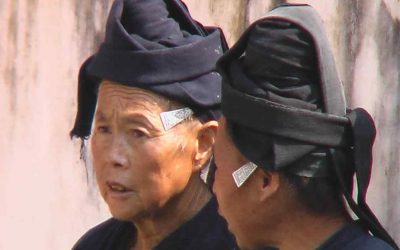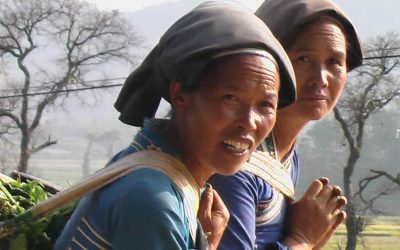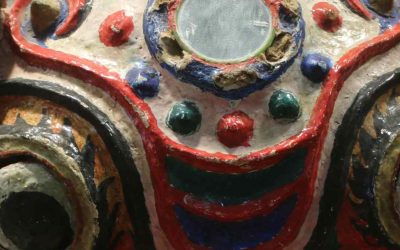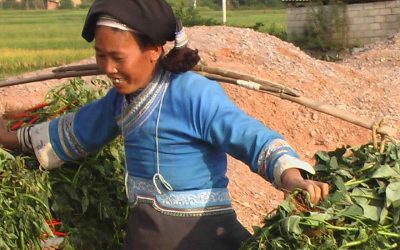Basic facts about the Zhuang
Name: Zhuang
Population: 17,000,000
Localization: Guangxi Zhuang Autonomous Region, Yunnan province (Wenshan Zhuang Autonomous Prefecture)
«The Zhuang are a group of peoples concentrated almost exclusively in western Guangxi and eastern Yunnan, with small patches of communities in eastern Guangxi and western Guangdong… The peoples of western Guangxi and eastern Yunnan used a variety of terms to describe themselves, which corresponded to smaller ethnic groups that the government now declares are part of the greater Zhuang nation.» (Creating the Zhuang.- Katherine Palmer Kaup, pp. 25-26)
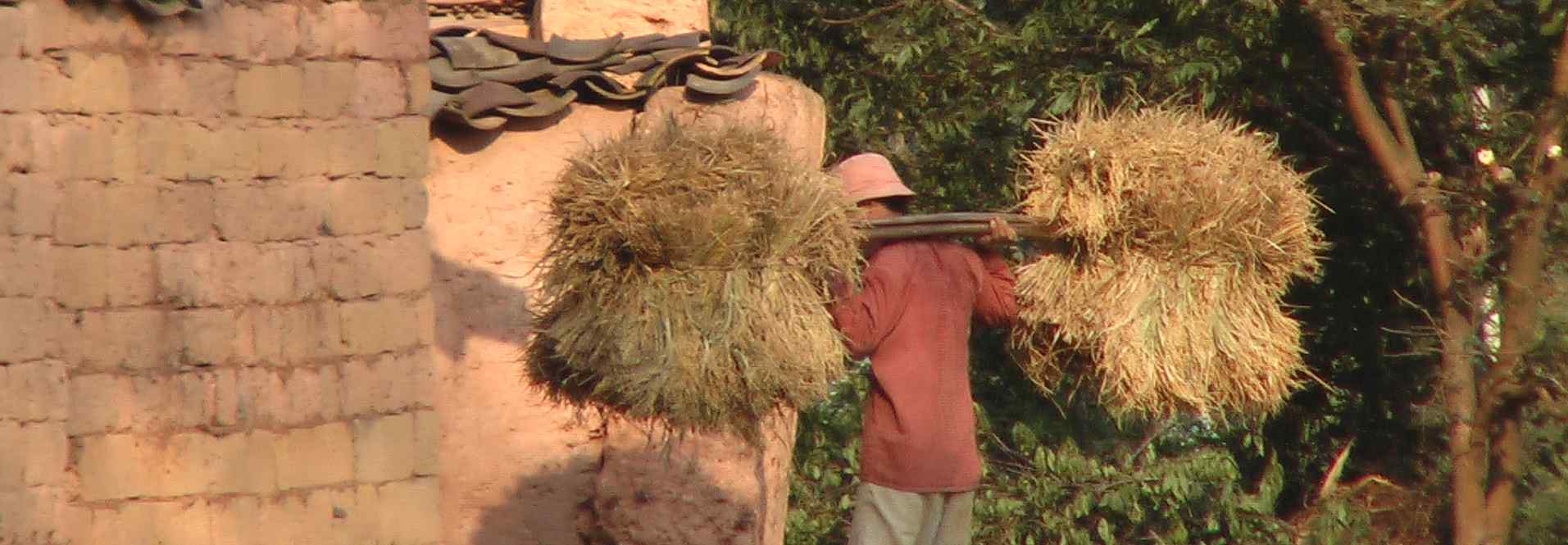
Introductory Articles in Ethnic China
The Chinese started to have a regular presence in the former Zhuang territory after the first emperor.
The Zhuang Nationality in Wenshan Prefecture:
Wenshan Prefecture possesses an ethnic diversity that makes it one of the most interesting places to travel.
Funeral Masks of the Zhuang in the Yunnan Nationalities Museum
Known as Longyawai Masks, they are funeral ceremony masks popular in the Zhuang communities of Wenshan Autonomous Prefecture, on the east of Yunnan Province.
The god Buluotou stretched out his big and long sex over the river, making a celestial bridge.
Local legends relate that during the Tang dynasty lived a Zhuang girl who sang extraordinarily well.
The older ones have a ritual origin, imitating the movements of their shamans during their religious ceremonies.
Pregnancy and Birth ceremonies among the Sha branch of the Zhuang
When the pregnancy reaches five months, they invite a woman shaman to call the small soul.
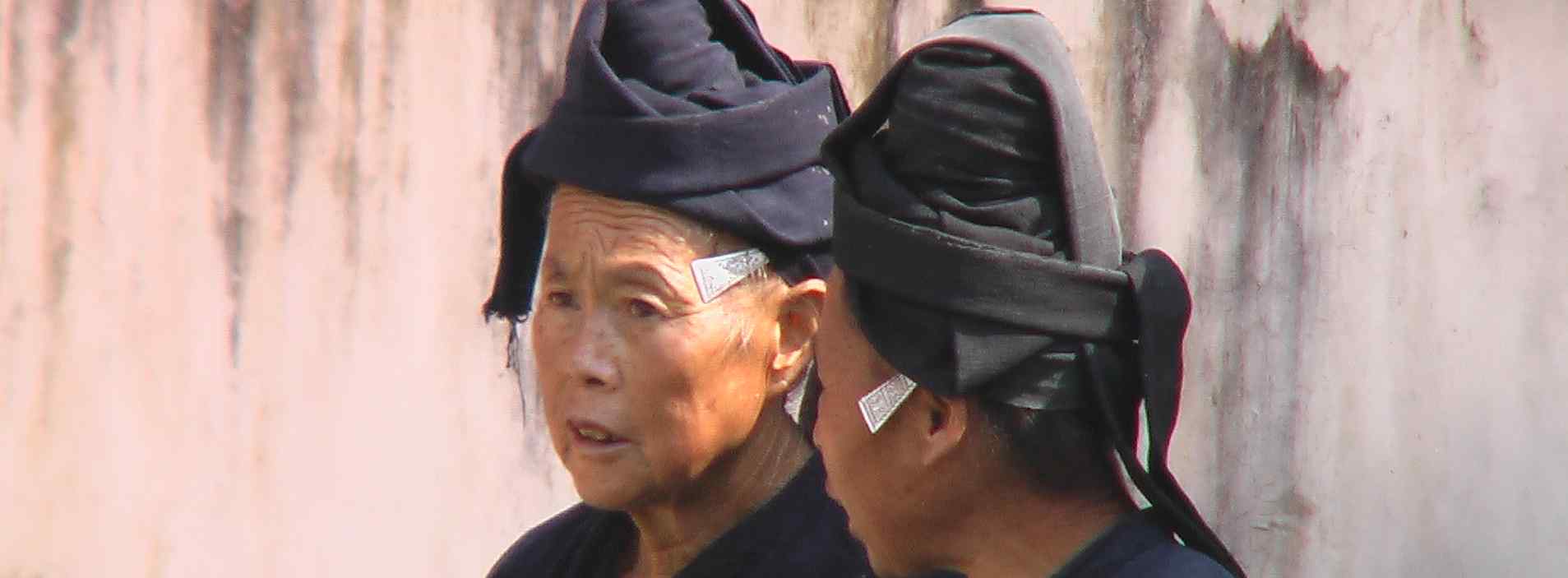
Some books we have browsed about the Zhuang
Bwz Licuh and Margaret Milliken. At Grand-father’s Knee – Zhuang Folk Tales from Wuming. Nationalities Press. Beijing. 2001
All the tales included in this book reflect in a similar way a voice that come from the soul of the people. Far from complicated philosophical concepts, the stories narrated in this book reflect the everyday life of the Zhuang farmers.
Dai Guanglu and He Zhengting. The General introduction of the Culture of the Zhuang People. Yunnan Fine Arts Publishing House. Kunming, 2005.
Though this book is not properly written in English, it has a two page English introduction to each of the twelve chapter it contains. The book is fully colour illustrated and it counts also with an English index, so it can be one useful quick reading about the main characteristic of the Zhuang culture in Yunnan Province.
David Holm.- Recalling Lost souls: The Baeu Rodo Scriptures – Tai Cosmogonic Texts from Guangxi in Southern China. Bangkok, 2004. 344 pp.
This is one of the most valuable books to know the myths and culture of the Zhuang. After an introduction to Zhuang culture and way of life, it contains the translation of 12 important myths of the Zhuang. These myths were preserved in the Zhuang scriptures, religious books used for their bimos to perform some ceremonies and rituals.
David Holm. Mapping the Old Zhuang Character Script – A Vernacular Writing System from Southern China. Brill, Leiden and Boston, 2013.
The traditional Zhuang character script is an instance of a sinoxenic script, that is, a script in which the Chinese character script has been borrowed and modified to write a different language, in this case the Tai language now known as Zhuang.
Huang Guiqiu. Researches on the Mo culture of the Zhuang (壮族墨文化研究 Zhuang zu mo wenhua yanjiu). Nationalities Press. Beijing. 2006. 321 pp
Mo culture of the Zhuang refers to the Mo beliefs of the Zhuang and the Buyi nationalities; as their culture share a high percentage of common elements, beliefs and deities.
Liao Mingjun. Deciphering the culture of the fertility cults (生殖崇拜的文化解读 Shengzhi chongbai de wenhua jiedu). Guangxi Peoples Press. Nanning, 2006.
This book is a study of the fertility cults among the Chinese nationalities. Introducing the reader the different manifestations that these cults take shape in the myths, rituals and taboos of the Han Chinese and the national minorities, it is an attempt to compile a complete overview of the fertility cults in China.
Zhou Yanxian. Two Thousand Zhuang Proverbs from China with Annotations and Chinese and English Translation. 2017 Peter Lang Publishing, Inc., New York. 2016
Both myths and proverbs are reflections of a people’s soul, while the first are used by the religious specialists in very concrete environment, the last are part of everybody knowledge, and transmitted from parents to sons, are a part of a kind of common wisdom that oils the life of the community, including customary law and education, production practices, religious taboos and references to mythical and historical episodes.
MORE ABOUT BOOKS
Books to understand the Zhuang Nationality
The books everybody needs to read for know about the Zhuang nationality.
Chinese Bibliography of the Zhuang Nationality
Some interesting books about the Zhuang, in Chinese language.
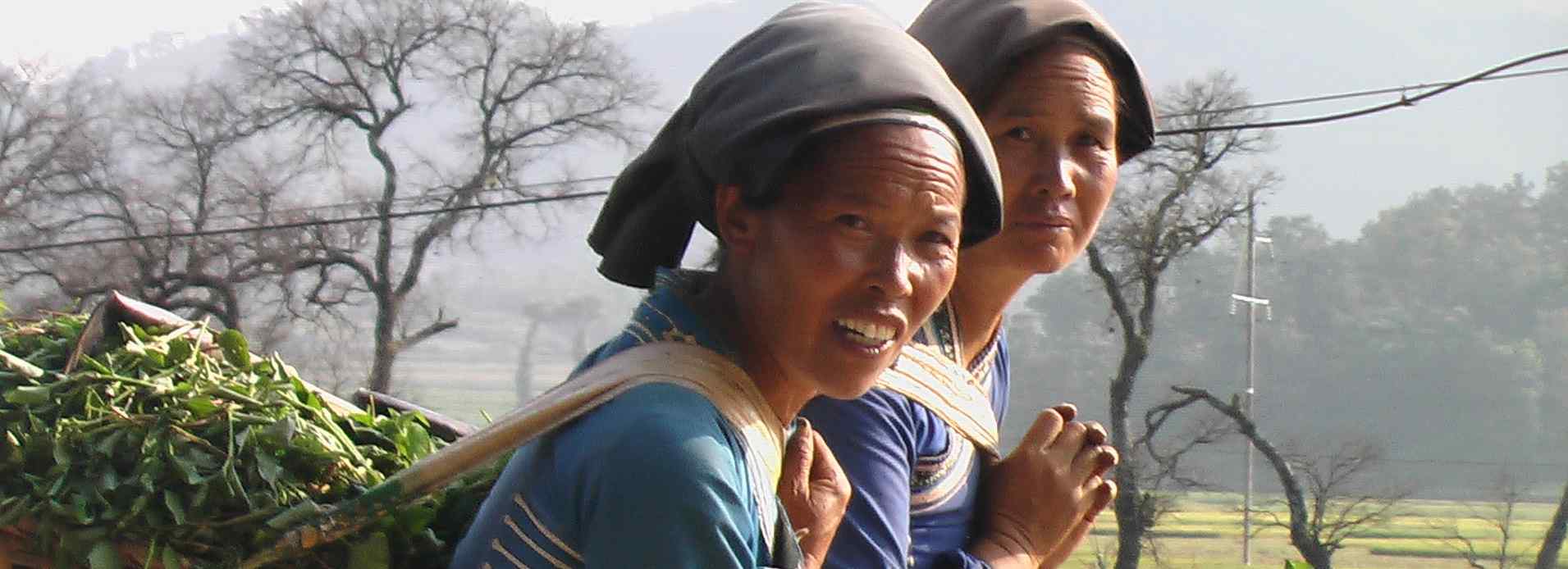
Free books about the Zhuang Nationality
Fortunately for the lovers of the Zhuang nationality culture and language, there are some books, freely available to all the interested readers. Here, there is a list of the books we know are at this moment free to read and/or download. Notices about other books freely available will be welcomed.
Tales and myths:
A Digital Selection of Zhuang Poetry. Selections from: “The Nong People Sing of Ancient Times,” The Song of the Origins of the Nong People. By Huang Changli, Wang Mingfu, Zhang Tinghui, Wang Qingze, Eric C. Johnson, Cho Induk. The Zhuang Studies, Development & Research Association of Wenshan Prefecture, Yunnan Province & SIL International.
“The Nong People Sing of Ancient Times.” Is a poem part of the invaluable cultural heritage of the Nong branch of the Zhuang people of Wenshan, and has been registered in the prefecture’s listing of intangible cultural heritage. Portions of this epic poem continue to be passed on orally by Zhuang folk artists in every Nong Zhuang district and township. This present selection includes three thousand lines from the more than ten thousand lines of the epic. Translated is the Creation of the word as well as the myths of the origins of animals and things. The book is trilingual in Nong-Zhuang, Chinese and English.
Yunnan Zhuang Folktales Collection. by Huang Changli, Wang Mingfu, Wang Qingze, Cho Induk, Susanne Johnson, Eric Johnson. Yunnan Nationalities Press, 2016.
This book is in Zhuang, Chinese, and English. The book contains 20 folktales of the Zhuang living in Wenshan Prefecture, Yunnan Province. As they are linguistic and culturally divided into three branches, the book contributes to clarify the cultural landscape of the Zhuang with 15 tales of Nong Branch of the Zhuang and 5 of the Sha Branch.
– A brocade of the Zhuang nationality:
A Mother weaves a magic brocade cloth for her son which flies away. The son rescues the cloth from fairies in a distant land. They return him home and everyone copies the pattern from the boy’s mother.
Culture
Zhuang Cultural and Linguistic Heritage. by Wang Mingfu and Eric Johnson, 2008
In the course of carrying out their research project, the authors noticed that the rate of disappearance of the traditional culture of the Yunnan Zhuang was increasing. Because the majority of young people in rural areas are now going to urban areas seeking work, few have the opportunity to study their own fascinating culture. This work covers a broad range of topics, from cultural practices to history to language varieties, and its wealth of photographic documentation will prove useful for researchers.
Yearning for Zaan or Home: Gender, development and home in Zhuang Women’s narratives on Migration on a Southwest Chinese village. By Xiang Rong. Hong Kong Polytechnic University. 2006
Migration is widely practised by the Zhuang, and this migration occurs in a myriad of gendered forms. The narratives of women unfold a wide range of meanings attached to various forms of migrations.
Linguistics
A sociolinguistic survey of the Dejing Zhuang sub-dialect area. Eric M. Jackson, Ph.D., Emily H.S. Jackson and Shuh Huey Lau. SIL. 2010
This report presents the results of a dialect intelligibility survey carried out in 2008 in the southwestern part of the Guangxi Zhuang Autonomous Region of China–what Zhang et al (1999) describe as the Dejing sub-dialect area of Southern Zhuang.
A Sociolinguistic Introduction to the Central Taic languages of Wenshan Prefecture, China. By Eric C. Johnson and Mingfu Wang.
Relatively few works focused on Central Tai languages are available. The aim of this work is to provide sociolinguistic data from the several Central Taic Zhuang languages of Wenshan Prefecture, resulting from sociolinguistic field research conducted from 2005 to 2007.
Hongshui He Zhuang dialect intelligibility survey. By Andy Castro and Bruce Hansen SIL. 2010
The Hongshui He region is home to around 2.5 million Zhuang speakers. In conducting the survey, the primary tools used were Recorded Text Tests and wordlist comparisons. The results of this survey show that Hongshui He Zhuang can be divided into three dialects.
Nong Zhuang – Chinese – English Lexicon
The first and only available trilingual lexicon of the Nong Zhuang language.
In Chinese
A Pictorial Collection of the Traditional Art of the Yunnan Zhuang. By Wang Mingfu and Jin Hong, editors. Nationalities Publishing House of Yunnan. 2013
As the Wenshan Zhuang Language & Culture Archive Created by Eric C. Johnson is the main publisher of materials about Wenshan Zhuang language, myths and culture, readers who want to check for new publications can regularly visit their homepage.
Scholars Researches available in the Web
Zhuang History and Culture
Jeffrey G. Barlow.- Early Weapons Systems and Ethnic Identity in the Sino-Vietnamese Frontier
In this paper I have tried to analyze the early culture of the Zhuang/Nung, and particularly their relationship to the cultures of the Chinese Central Plain, by focusing upon weapons and warfare. I believe that this approach yields useful new information on both the Zhuang/Nung themselves and upon the early cultural processes on either side of today’s Sino-Vietnamese frontier.
Fay Beauchamp. Asian Origins of Cinderella: The Zhuang Storyteller of Guangxi. Oral Tradition, 25/2 (2010): 447-496
The acceptance and understanding of the Asian origins of the “Cinderella” story should replace the widely held belief that the story is fundamentally Western or universal. The Zhuang, an ethnic group at the intersection of China and Vietnam, combined ideas from their own traditions and experiences with motifs from Hindu and Buddhist narratives circulating in their area during the Tang Dynasty, and should be credited with creating this subversive, virginal, talented, and compassionate heroine.
Pingwen Huang.- Sinification of the Zhuang people, culture and their language.
Among the nine counties where the Zhuang make up the 90% of the total local population, the Zhuang language is spoken in most occasions, exºcep those that are official in nature.
Chen Jing, Li Hui, Qin Zhen-Dong, Liu Wen-Hong, Lin Wei-Xiong, Yin Rui-Xing, Jin Li, Pan Shang-Ling.- Y-chromosome Genotyping and Genetic Structure of Zhuang Populations
Frequency distribution and principal component analysis showed that Zhuang was closely related to groups of Bai-Yue origin and therefore was likely to be the descendant of Bai-Yue. The results of principal component analysis and hierarchical clustering analysis contradicted the linguistically derived north-south division. Interestingly, a west-east clinal trend of haplotype frequency changes was observed.
Prasan Kunchornmenakun, Boonsom Yodmalee and Notai Udonboonyanupap.- The Zhuang in the Province of Guangxi, China: Identity Adaptation and cultural identity. The Social Sciences. 2009.
Outside influences have made the Zhuang to adapt, change and improve their technology and local knowledge to keep up with modernization and globalization within the region and to maintain an equilibrium within the Chinese society.
Ya-ning Kao. Chief, God, or National Hero? Representing Nong Zhigao in Chinese Ethnic Minority Society.
The establishment of ceremonies venerating Nong Zhigao in Zhuang society through female oral ritual practice is complementary to the state recognition of local deities in Han society, furthermore, demonstrates, in the case of one female deity, the Empress of Heaven (Tianhou), that the local deity winning state approval might supplant other local deities.
Zhang Hong, Zhang Ling. Protection and Innovation of Intangible Cultural Heritage – Buluotuo Festival
Buluotuo is a fairy tale figure in Zhuang (ethnic minority in south China) aboriginal oral culture. The Buluotuo Culture, the core of which is the Buluotuo Scriptures, was among the first batch to be added to the National Intangible Cultural Heritage List. It originated in the Tianyang County, Bose, Guangxi Zhuang Autonomous Region, a remote and impoverished area. The Buluotuo Folk Cultural Festival has been held there annually for the last five years. The organizer holds the festival to help protect the Zhuang ethnic culture and create a regional tourist attraction.
Zhuang language
Adams Bodomo.- Strategies for the Documentation and Revitalization of the Zhuang Language of Southwestern China
This paper outlines some strategies, methods, and techniques for the documentation and revitalization of Zhuang language and culture through linguistic fieldwork.
Adams Bodomo.- The Grammatical Structure of Zhuang
This book is a descriptive grammar of the Zhuang language spoken mainly in the Guangxi Zhuang Autonomous Region in southwestern China. In this introductory chapter we introduce this region, describe the language situation and fieldwork that led to the collection of data for this research, outline the major linguistic features of the language, and finally present a snopsis of the various chapters.
Adams Bodomo.- Field Notes on the Pronominal System of Zhuang
The Guangxi Zhuang linguistic area thus presents a scenario of multilingualism, polyglottism, and, consequently, language contact phenomena such as codemixing and switching, leading to a veritable medley of language influence.
Eric C. Johnson. The Southern Zhuang Languages of Yunnan Province’s Wenshan Prefecture from a Sociolinguistic Perspective
The goal of this paper is to introduce the sociolinguistic situation of the Yunnan Southern Zhuang languages, especially focusing on the current language use situation in rural Southern Zhuang villages, the present vitality of these languages and their prospects for future preservation and development.
Photo Exhibitions
– A Zhuang Village near Qiubei:
In the Zhuang villages of Wenshan Prefecture, the life runs slowly yet. Farmers communities, linked to their land as intimately as in the past centuries, live quite lives far from the hustle and bustle of the centers of touristic development.
Last posts about the Zhuang
Festivals of the Zhuang Nationality
Festivals of the Zhuang Nationality New Year The most important festival of the Zhuang year. Their celebration is similar to that of the local Chinese, although with some special characteristics. The children play their traditional games. In Wenshan County horse...
Zhuang phallic ritual
Zhuang phallic ritual Zhuang minority has an interesting phallic ceremony. According to their legends, in antique times there was no communication between the two banks of the Hongshui River, women living on one bank of the river and men on the other. The god...
Zhuang Nationality in Wenshan Prefecture of Yunnan
Zhuang Nationality in Wenshan Prefecture Wenshan Zhuang and Miao Autonomous Prefecture lies in the eastern section of Yunnan Province. Scarcely visited by local and international tourists with populations not considered of enough interest by the academic world, is one...
History of the Zhuang nationality in China
History of the Zhuang nationality in China It is widely thought that the ancestors of the Zhuang were the ancient Yue. But there are no unanimity about the character, history and territory of these Yue. One people called “Yue” appears in the Chinese chronicles of the...
Funeral Masks of the Zhuang people in the Nationalities Museum of Kunming
Funeral Masks of the Zhuang people in nationalities Museum of Kunming Known as Longyawai Masks, they are funeral ceremony masks popular in the Zhuang communities of Wenshan Autonomous Prefecture, on the east of Yunnan Province. The masks are shaped as a lion, they are...
We are lucky- A list of free books about the Zhuang
Free books about the Zhuang Fortunately for the lovers of the Zhuang nationality culture and language, there are some books, freely available to all the interested readers. Here, there is a list of the books we know are in this moment free to read and/or download....
We are working to republish all the old post in this new format, but due to the vast amount of post published in the last years, it is possible that old and new design posts will coexist during some months.
INDEX OF ETHNIC GROUPS PAGES
General –Achang – Bai – Baima – Baoan – Bulang – Buyang – Buyi – Chashan – Dai – Daur – Deang – Deng – Dong – Dongxiang – Dulong – Ersu – Ewenki – Gejia – Gelao – Hani – Hezhe – Jingpo – Jino – Kucong – Lahu – Lhoba – Li – Lisu – Manchu – Maonan – Miao – Mongols – Moso – Mulao – Namzi – Naxi – Nu – Oroqen – Pumi – Qiang – Sani – She – Shui – Talu – Tibetan – Tu – Tujia – Uygur – Wa – Xibe – Yao – Yi – Yugur– Zhuang







